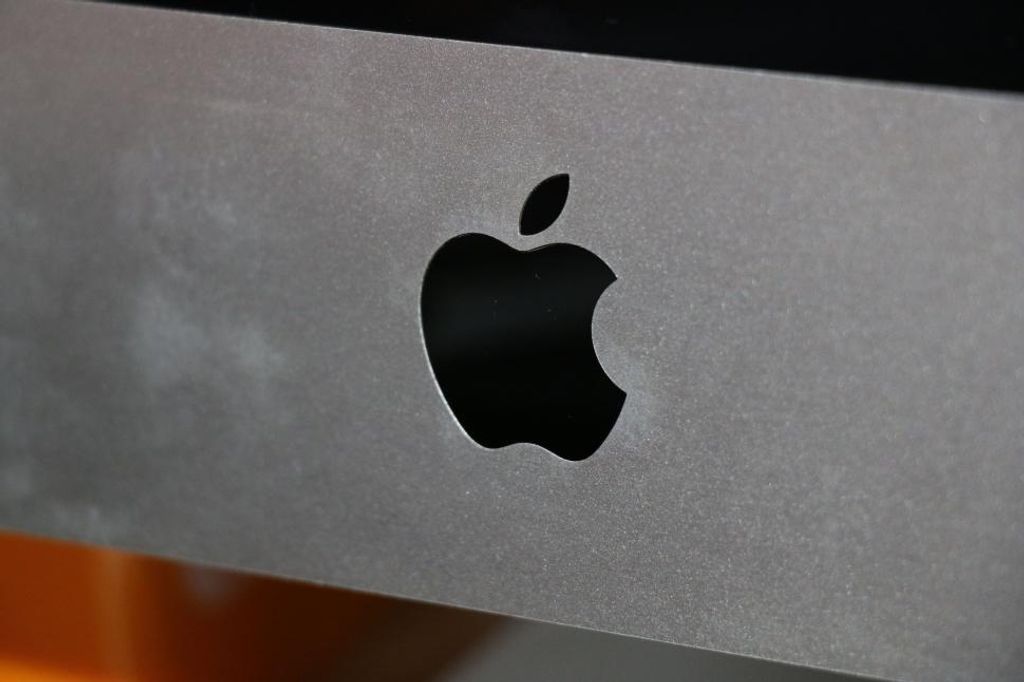Apple is one of the world’s most valuable and influential companies, known for its innovative products and loyal customer base. In this article, we will explore the pros and cons of Apple, covering its history, product line, design philosophy, ecosystem, brand loyalty, innovation, pricing strategy, and environmental impact.
Key Takeaways
- Apple has a rich history, with key milestones that have shaped the company’s success.
- The Apple product line includes Mac computers, iPhone, iPad, Apple Watch, and Apple TV, offering a range of devices for different needs.
- Apple is known for its sleek and minimalistic design, attention to detail, and user-friendly interfaces.
- The Apple ecosystem provides seamless integration and cross-device compatibility, along with a range of Apple services.
- Apple has a cult-like following, with strong customer satisfaction and repeat purchases.
The History of Apple

Founding of Apple
Apple was founded by Steve Jobs, Steve Wozniak, and Ronald Wayne on April 1, 1976, in Cupertino, California. The company started in the garage of Steve Jobs’ parents’ house and initially focused on producing and selling the Apple I personal computer kit. The Apple I was a revolutionary product at the time, as it was one of the first personal computers to come with a fully assembled motherboard. Despite its limited success, the Apple I laid the foundation for Apple’s future innovations and set the stage for the company’s rapid growth.
Key Milestones in Apple’s History
Apple has had several key milestones throughout its history that have shaped the company into what it is today. One of the most significant milestones was the founding of Apple in 1976 by Steve Jobs, Steve Wozniak, and Ronald Wayne. This marked the beginning of a company that would go on to revolutionize the tech industry with its innovative products and design philosophy.
Another important milestone in Apple’s history was the launch of the Macintosh computer in 1984. This was the first commercially successful personal computer to feature a graphical user interface, making it more accessible and user-friendly.
In 2001, Apple introduced the iPod, a portable media player that would change the way people listen to music. The iPod became a cultural phenomenon and solidified Apple’s position as a leader in the consumer electronics market.
One of the most significant milestones in recent years was the launch of the iPhone in 2007. The iPhone revolutionized the smartphone industry with its touchscreen interface and app ecosystem, setting a new standard for mobile devices.
These key milestones in Apple’s history demonstrate the company’s commitment to innovation and its ability to anticipate and meet the needs of consumers.
Apple’s Product Line

Mac Computers
Mac computers have long been known for their sleek design, powerful performance, and user-friendly interface. With their integration of hardware and software, Mac computers offer a seamless and intuitive user experience. Whether you’re a creative professional, a student, or a casual user, Mac computers provide a reliable and efficient platform for all your computing needs.
One of the key advantages of Mac computers is their superior build quality. Apple meticulously designs and manufactures their hardware, resulting in durable and long-lasting machines. Additionally, Mac computers are known for their excellent display quality, offering vibrant colors and sharp resolution.
In terms of software, Mac computers run on macOS, which is known for its stability and security. The operating system is designed to work seamlessly with Apple’s hardware, providing a smooth and efficient performance. Mac users also benefit from regular software updates, ensuring that their computers are always up to date with the latest features and security patches.
While Mac computers offer numerous benefits, it’s important to consider some drawbacks as well. One potential downside is the higher price tag compared to other PC options. Mac computers are generally more expensive, especially when compared to entry-level PCs. However, many users believe that the premium price is justified by the quality and performance that Mac computers offer.
Another consideration is the limited gaming options on Mac computers. While there are a growing number of games available for macOS, the selection is still smaller compared to Windows. If gaming is a priority for you, it may be worth considering a Windows-based PC.
Overall, Mac computers are a popular choice for those who value design, performance, and a user-friendly experience. With their sleek design, powerful hardware, and intuitive software, Mac computers continue to be a top choice for many users.
iPhone
The iPhone is one of Apple’s most iconic and popular products. Known for its sleek design, powerful performance, and user-friendly interface, the iPhone has revolutionized the smartphone industry. With each new generation, Apple introduces innovative features and cutting-edge technology that push the boundaries of what a smartphone can do. From the introduction of the App Store to the integration of advanced camera systems and facial recognition technology, the iPhone continues to set the standard for smartphones. It offers a seamless user experience, allowing users to easily navigate through apps, multitask, and access a wide range of services and features. Whether you’re a casual user or a tech enthusiast, the iPhone offers something for everyone.
iPad
The iPad is a versatile device that has revolutionized the way we consume media, work, and play. With its sleek design, powerful performance, and intuitive user interface, the iPad has become a popular choice for both personal and professional use.
One of the key advantages of the iPad is its extensive app ecosystem. The App Store offers a wide range of apps specifically designed for the iPad, allowing users to customize their device to suit their needs. Whether you’re looking for productivity apps, creative tools, or entertainment options, there’s an app for almost everything.
Additionally, the iPad offers seamless integration with other Apple devices and services. With features like Handoff, Continuity, and iCloud, you can easily switch between devices and access your content from anywhere. This integration creates a cohesive and convenient user experience, making the iPad an essential part of Apple’s ecosystem.
In terms of performance, the iPad delivers impressive speed and power. The latest models are equipped with powerful processors and graphics capabilities, allowing for smooth multitasking, gaming, and media consumption. Whether you’re editing videos, playing graphics-intensive games, or running demanding apps, the iPad can handle it all.
However, it’s important to note that the iPad does have some limitations. While it offers a great user experience for consuming media and performing basic tasks, it may not be suitable for heavy-duty work or professional use. The lack of a physical keyboard and limited storage options can be limiting for certain tasks.
Overall, the iPad is a versatile and powerful device that offers a great user experience and seamless integration with other Apple devices. Whether you’re a student, professional, or casual user, the iPad has something to offer. Its combination of sleek design, powerful performance, and extensive app ecosystem make it a popular choice for many.
Apple Watch
The Apple Watch is a popular smartwatch that offers a wide range of features and functionalities. It seamlessly integrates with other Apple devices, such as iPhones, iPads, and Mac computers, allowing users to receive notifications, make calls, send messages, and track their fitness activities directly from their wrist. The Apple Watch also supports various health and wellness features, including heart rate monitoring, sleep tracking, and workout tracking. With its sleek and stylish design, user-friendly interface, and extensive app ecosystem, the Apple Watch has become a favorite among tech enthusiasts and fitness enthusiasts alike.
Apple TV
Apple TV is a digital media player and microconsole developed and sold by Apple Inc. It is a small device that connects to a television and allows users to stream content from various online platforms, such as Netflix, Hulu, and Apple’s own streaming service, Apple TV+. With Apple TV, users can access a wide range of movies, TV shows, and other multimedia content, making it a popular choice for entertainment enthusiasts. The device also supports apps and games, providing additional functionality and entertainment options. One of the key advantages of Apple TV is its integration with other Apple devices and services, allowing users to seamlessly connect and control their media experience across multiple devices. Additionally, Apple TV offers a sleek and user-friendly interface, making it easy for users to navigate and discover new content. However, it is important to note that Apple TV is limited in terms of its compatibility with non-Apple devices and platforms, which may restrict its usage for some users.
Apple’s Design Philosophy

Sleek and Minimalistic Design
Apple is known for its sleek and minimalistic design, which is evident in all of its products. The company’s commitment to simplicity and elegance is reflected in the clean lines, smooth surfaces, and minimalist aesthetics of its devices. From the sleek aluminum body of the Mac computers to the slim and lightweight design of the iPhone, Apple products are visually appealing and exude a sense of sophistication. The attention to detail is also apparent in the small touches, such as the iconic Apple logo on the back of each device. This design philosophy not only enhances the overall user experience but also sets Apple apart from its competitors.
Attention to Detail
One of the key aspects of Apple’s design philosophy is its attention to detail. Apple meticulously considers every aspect of its products, from the hardware to the software, to create a seamless and intuitive user experience. This attention to detail is evident in the sleek and minimalistic design of Apple devices, which prioritize simplicity and elegance. Apple also pays close attention to the materials used in its products, ensuring they are of the highest quality and feel premium to the touch. Additionally, Apple’s software interfaces are designed with precision, making it easy for users to navigate and interact with their devices.
User-Friendly Interfaces
Apple is known for its user-friendly interfaces, and this extends to its music streaming service, Apple Music. The platform offers an intuitive and easy-to-navigate interface, making it convenient for users to explore its vast music library. Personalized recommendations, curated playlists, and radio stations tailored to individual preferences enhance the overall listening experience. Additionally, features such as offline playback, lyrics display, and seamless integration with Apple’s ecosystem contribute to a cohesive and enjoyable user experience.
Apple’s Ecosystem

Seamless Integration
Apple’s commitment to seamless integration is one of the key advantages of its ecosystem. With macOS, iOS, and Apple devices like Apple Watch, users can easily connect and sync their devices, allowing for a seamless and cohesive user experience. Additionally, Apple’s services, such as iCloud, Apple Music, and Apple Pay, are seamlessly integrated across devices, making it convenient for users to access their data, media, and make secure payments. This level of integration not only enhances the overall user experience but also promotes efficiency and productivity.
Furthermore, Apple’s ecosystem is not limited to its own devices. Apple Music, for example, is available on Android devices, which extends its compatibility to a broader user base beyond Apple’s ecosystem. This widespread device compatibility allows users to access their music seamlessly across different platforms and devices, enhancing the overall user experience.
In summary, Apple’s commitment to seamless integration ensures that users can easily connect and sync their devices, access their data and media across platforms, and enjoy a cohesive user experience. This level of integration promotes efficiency, productivity, and convenience for Apple users.
Cross-Device Compatibility
Apple Music is compatible with a wide range of devices, including iPhones, iPads, Mac and Windows computers, Apple Watch, Apple TV, and various smart speakers. Additionally, it is available on Android devices, which extends its compatibility to a broader user base beyond Apple’s ecosystem. This widespread device compatibility allows users to access their music seamlessly across different platforms and devices, enhancing the overall user experience.
- Apple Music is compatible with iPhones, iPads, Mac and Windows computers, Apple Watch, Apple TV, and various smart speakers.
- It is also available on Android devices, expanding its compatibility to a wider user base.
- Users can access their music seamlessly across different platforms and devices.
- This enhances the overall user experience.
Apple Services
Apple offers a range of services to enhance the user experience and provide additional value to its customers. One of the key services is Apple Music, a music streaming platform that offers a vast library of songs, albums, and playlists. Apple Music is available on macOS, iOS, and Apple devices like Apple Watch, as well as Android phones and tablets, extending its compatibility to a broader user base beyond Apple’s ecosystem. This widespread device compatibility allows users to access their music seamlessly across different platforms and devices, enhancing the overall user experience.
In addition to its extensive music library, Apple Music offers a user-friendly interface with easy navigation, making it convenient for users to explore and discover new music. The platform provides personalized recommendations, curated playlists, and radio stations tailored to individual preferences. With its availability in over 115 countries, Apple Music is widely accessible to users around the world, offering a diverse range of music from various regions.
One notable feature of Apple Music is its Hi-Resolution Audio, which provides high-quality sound for an immersive listening experience. However, it’s important to note that the availability of Hi-Resolution Audio is limited, and playback of these files requires compatible devices.
If you’re considering subscribing to Apple Music, it’s worth knowing that the service offers a 3-month trial period before billing starts. This allows users to explore the platform and decide if it meets their music streaming needs. Additionally, Apple Music offers exclusive content and radio stations, providing a unique and curated listening experience.
Overall, Apple Music offers a comprehensive music streaming service with a vast library, user-friendly interface, and compatibility across multiple devices. Whether you’re a fan of Apple’s ecosystem or an Android user, Apple Music provides a seamless and enjoyable music streaming experience.
Apple’s Brand Loyalty

Cult-like Following
Apple has cultivated a devoted and passionate fan base that is often referred to as a ‘cult-like following’. This dedicated community of Apple enthusiasts is known for their unwavering loyalty and enthusiasm for the brand. They eagerly await each new product release and are quick to adopt the latest Apple technologies. The cult-like following can be attributed to several factors, including Apple’s reputation for innovation, sleek design, and user-friendly interfaces. Apple’s ability to create products that seamlessly integrate into their users’ lives has also contributed to the strong sense of brand loyalty. This loyal customer base not only drives sales but also serves as a testament to the quality and desirability of Apple products.
Strong Customer Satisfaction
One of the key factors contributing to Apple’s success is its strong customer satisfaction. Apple has consistently ranked high in customer satisfaction surveys, with customers praising the quality and performance of Apple products. The company’s commitment to providing excellent customer service and support has also played a significant role in building a loyal customer base. Apple’s focus on user experience and attention to detail has resulted in products that are intuitive and easy to use, further enhancing customer satisfaction. Additionally, Apple’s ecosystem of products and services offers a seamless and integrated experience for users, which has contributed to high levels of customer satisfaction.
Repeat Purchases
One of the key indicators of Apple’s brand loyalty is the high rate of repeat purchases. Apple customers tend to be highly satisfied with their products and often choose to upgrade to the latest models when they become available. This is partly due to Apple’s commitment to quality and innovation, as well as its strong customer service and support. Additionally, Apple’s ecosystem plays a significant role in encouraging repeat purchases. The seamless integration between Apple devices and services creates a cohesive user experience, making it easier for customers to stay within the Apple ecosystem.
Apple’s Innovation

Revolutionary Products
Apple has a long history of introducing revolutionary products that have transformed the tech industry. From the iconic Macintosh computer in 1984 to the groundbreaking iPhone in 2007, Apple has consistently pushed the boundaries of innovation. These products have not only changed the way we use technology but have also influenced the design and functionality of other devices in the market. The introduction of the App Store in 2008 further revolutionized the way we interact with our devices, opening up a world of possibilities for developers and users alike.
Cutting-Edge Technology
Apple is renowned for its commitment to cutting-edge technology. The company consistently pushes the boundaries of innovation, introducing groundbreaking features and advancements in its products. From the introduction of the first iPhone with its multi-touch display to the development of the powerful M1 chip for Mac computers, Apple continues to set the standard for technological excellence.
One notable example of Apple’s cutting-edge technology is the Face ID facial recognition system. This advanced biometric authentication method revolutionized smartphone security and has since been adopted by other manufacturers. With Face ID, users can unlock their devices and authenticate payments with a simple glance, providing a seamless and secure user experience.
In addition to hardware innovations, Apple also excels in software development. The company’s operating systems, such as iOS and macOS, are known for their stability, performance, and intuitive user interfaces. Apple’s software ecosystem seamlessly integrates with its hardware, creating a cohesive and user-friendly experience across all devices.
Overall, Apple’s commitment to cutting-edge technology ensures that its products remain at the forefront of innovation, delivering exceptional performance and user satisfaction.
Industry-Leading Research and Development
Apple’s commitment to innovation is exemplified through its industry-leading research and development efforts. The company invests heavily in R&D to push the boundaries of technology and create groundbreaking products. Apple’s R&D team is known for its meticulous attention to detail and relentless pursuit of perfection. This dedication to innovation has resulted in revolutionary products that have redefined entire industries. From the Macintosh computer to the iPhone and iPad, Apple has consistently introduced cutting-edge technology that has set the standard for the market. The company’s focus on R&D ensures that it stays ahead of the competition and continues to deliver products that delight and inspire its customers.
Apple’s Pricing Strategy

Premium Pricing
One of the key aspects of Apple’s pricing strategy is its focus on premium pricing. Apple products are known for their higher price points compared to competitors in the market. This premium pricing reflects the brand’s commitment to delivering high-quality products with cutting-edge technology.
By positioning itself as a luxury brand, Apple creates a sense of exclusivity and prestige around its products. This strategy appeals to a specific target market that values quality, design, and status. While the higher price tag may deter some price-conscious consumers, it also contributes to the perception of Apple products as premium and aspirational.
Table: Apple’s Pricing Strategy
| Pros | Cons |
|---|---|
| High-quality products | Higher price points |
| Exclusivity and prestige | Limited affordability |
| Perceived value for money | Less accessible to budget-conscious consumers |
In summary, Apple’s premium pricing strategy allows the company to maintain its brand image and position itself as a leader in the industry. While it may not appeal to all consumers, it attracts a loyal customer base that values the quality and status associated with Apple products.
Value for Money
When it comes to value for money, Apple products are often seen as more expensive compared to their competitors. However, what sets Apple apart is the overall user experience and the quality of their products. Apple devices are known for their seamless integration, intuitive interfaces, and long-term software support. This means that even though you may be paying a premium price upfront, you are getting a product that is built to last and will continue to receive updates and support for years to come.
In addition, Apple offers various pricing options to cater to different user preferences. They provide individual, family, and student subscription plans for services like Apple Music and iCloud storage. These options allow users to choose the plan that best suits their needs and budget.
While Apple products may not be the most affordable option on the market, they offer a combination of quality, performance, and longevity that many users find worth the investment.
High-Quality Products
One of the key advantages of Apple is its commitment to producing high-quality products. Apple has built a reputation for delivering devices that are known for their durability, performance, and sleek design. From the iconic Mac computers to the innovative iPhone, iPad, Apple Watch, and Apple TV, each product is meticulously crafted with attention to detail.
Apple’s focus on quality extends beyond just the hardware. The software and operating systems developed by Apple are known for their stability, security, and seamless integration with the hardware. This ensures that users have a smooth and reliable experience across all Apple devices.
In addition to the physical products, Apple also offers a range of services that complement its ecosystem. These services, such as iCloud, Apple Music, and the App Store, are designed to enhance the overall user experience and provide added value to Apple customers.
Overall, Apple’s commitment to producing high-quality products sets it apart from its competitors and has contributed to its strong brand loyalty and customer satisfaction.
Apple’s Environmental Impact

Commitment to Renewable Energy
Apple is committed to reducing its environmental impact and has made significant strides in using renewable energy. As of 2020, Apple’s global facilities are powered by 100% renewable energy, including data centers, offices, and retail stores. The company has also invested in renewable energy projects, such as solar and wind farms, to offset its carbon footprint. In addition, Apple is focused on recycling and reducing waste. The company has implemented recycling programs for its products and aims to use recycled materials in its manufacturing processes. By prioritizing renewable energy and sustainability, Apple is setting an example for other companies in the tech industry.
Reducing Carbon Footprint
Reducing carbon footprint is a key priority for Apple. The company has made significant efforts to minimize its environmental impact and promote sustainability. Here are some of the initiatives undertaken by Apple:
-
Renewable Energy: Apple is committed to using 100% renewable energy for its operations. The company has built solar farms and wind farms to power its data centers and offices.
-
Energy Efficiency: Apple designs its products to be energy-efficient, reducing power consumption and carbon emissions. The company also encourages customers to use energy-saving features and settings.
-
Recycling Initiatives: Apple has implemented recycling programs to responsibly dispose of electronic waste. The company recycles materials from old devices to create new products, reducing the need for mining and manufacturing.
-
Supply Chain Responsibility: Apple works closely with its suppliers to ensure they adhere to environmental standards. The company promotes responsible sourcing of materials and encourages suppliers to reduce their carbon footprint.
By focusing on these initiatives, Apple aims to minimize its impact on the environment and contribute to a more sustainable future.
Recycling Initiatives
Apple is committed to reducing its environmental impact through various recycling initiatives. One of the key programs is the Apple Trade In program, which allows customers to trade in their old Apple devices for credit towards a new one. This helps to extend the lifespan of the devices and reduce electronic waste. Apple also operates recycling programs in many countries, where customers can drop off their old devices for proper recycling. The company aims to recover and recycle as much material as possible from these devices, including precious metals and rare earth elements. By recycling responsibly, Apple is working towards a more sustainable future.
Conclusion
In conclusion, Apple Music offers a range of features and benefits that make it a popular choice among music streaming services. With high-quality audio, a vast music catalog, exclusive content, and seamless integration with Apple devices, it provides a user-friendly and enjoyable music streaming experience. However, it does have some drawbacks, such as limited device compatibility and the absence of a freemium account option. Overall, Apple Music is a worthy subscription for those who value quality and convenience in their music streaming experience.
Frequently Asked Questions
What is the history of Apple?
Apple was founded in 1976 by Steve Jobs, Steve Wozniak, and Ronald Wayne. It has since become one of the most successful and influential technology companies in the world.
What are some key milestones in Apple’s history?
Some key milestones in Apple’s history include the launch of the Macintosh computer in 1984, the introduction of the iPod in 2001, the release of the iPhone in 2007, and the unveiling of the Apple Watch in 2014.
What products does Apple offer?
Apple offers a range of products including Mac computers, iPhone, iPad, Apple Watch, and Apple TV.
What is Apple’s design philosophy?
Apple’s design philosophy is characterized by sleek and minimalistic design, attention to detail, and user-friendly interfaces.
What is Apple’s ecosystem?
Apple’s ecosystem refers to the seamless integration and cross-device compatibility between Apple devices, as well as the availability of various Apple services such as iCloud, Apple Music, and the App Store.
Why does Apple have a strong brand loyalty?
Apple has a strong brand loyalty due to its cult-like following, strong customer satisfaction, and the tendency of customers to make repeat purchases of Apple products.




